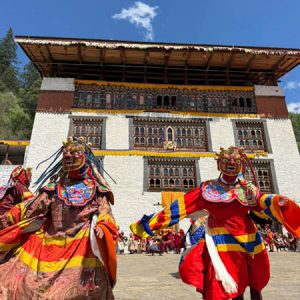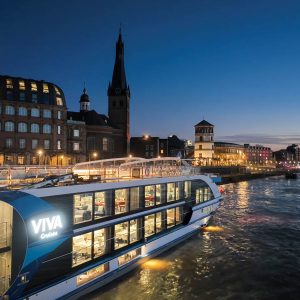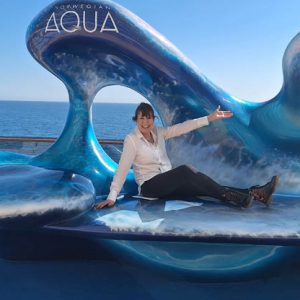Six of the best quirky facts about Estonia
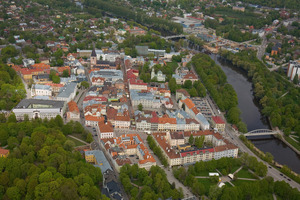
Estonia leads the world in mosquito swatting
Estonia became new world champions at the extreme spot of mosquito swatting in June 2010 after an Estonian man, Rein Leib, swatted 24 mosquitoes during a world championship attempt in the Estonian town of Tartu.
Participants had to swat as many mosquitoes as they could while standing in a square metre of grass, having worked up a sweat to tempt the mozzies.
The winner, who completely overshadowed the previous record holder Finland’s score of just eight, said “My arms and legs hurt and itch since the competition but otherwise I’m fine.”
Estonia’s one day coffee shops
Every summer inhabitants of the Estonian island of Hiiumaa throw open their doors and their gardens to set themselves up as one-day coffee shops.
The event takes place in the capital of Hiiumaa, Kärdla, known for its coffee drinkers since the 19th century. While other islanders were still drinking sour milk and birch juice, the residents of Kärdla were already roasting a brown coffee-type beverage.
During the first week of August each year householders bake cakes and serve coffee and tea to visitors to the islands, this year the event takes place on 4th August 2012, more details at www.visitestonia.com/en/kardla-cafe-day
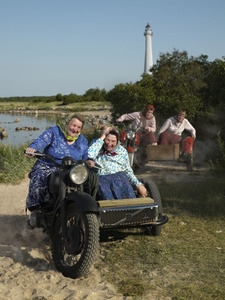 Estonians are world-class wife-carriers
Estonians are world-class wife-carriers
So successful are Estonians at the international sport of wife carrying that there is even a wife carrying hold known as the `Estonian style’ (the wife hangs upside-down with her legs around the husband’s shoulders, holding onto his waist).
Wife carrying competitions are believed to have started in Sonkajärvi, Finland, and the winner is the couple who completes the 253.5m course that includes sand, water and fence obstacles, in the shortest time. There is just one prize in the world championships, that Estonians won for ten successive years from 1998 – 2008, and that is the wife’s weight in beer.
The rules are fairly simple, the wife must be over 17 years old and weigh 49kg or carry a weighted back-pack, the only equipment the carrier can only wear is a belt and helmet and finally, the couples have to have fun.
Roll out the barrel
Estonians love saunas to such an extent, that they have built them into buses, floating rafts and even into a cistern of an old fire-engine. The best known floating sauna is called Püha Müristus (Holy Moses) and is on the River Navesti in Soomaa National Park.
The Barrel Sauna is popular among Estonians and is a barrel shaped wooden sauna that can be transported wherever the sauna lover goes, such as the heart of a forest in winter, or alongside a ski track.
Tallinn, home of the world’s first Christmas tree
The first recorded public display of a Christmas tree was in 1441 in the capital of German Livonia (now Estonia and Latvia) in the town square of Reval (now Tallinn). The custom was to dance around the tree at Christmas time, to celebrate the festive season and then burn it down.
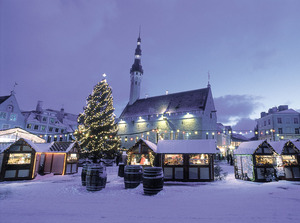 The Brotherhood of the Blackheads, a guild for unmarried merchants, first erected the tree for the holiday period in their brotherhood house. One the last night of celebrations the tree was taken to the Town Hall square where the members of the brotherhood danced about it with local girls, before setting fire to it.
The Brotherhood of the Blackheads, a guild for unmarried merchants, first erected the tree for the holiday period in their brotherhood house. One the last night of celebrations the tree was taken to the Town Hall square where the members of the brotherhood danced about it with local girls, before setting fire to it.
When Estonia was hit with the force of Hiroshima
Not only is Estonia the world’s most meteorite struck place in the world, but the Kaali meteorite crater on the island of Saaremaa was the last giant meteorite in the world that fell into a high density area. The power of the blast and energy of the impact is comparable with the Hiroshima Nuclear bomb.
As it entered the earth’s atmosphere the meteor broke up into up to nine massive pieces. The impact left a main crater 110m in diameter, 22m deep and at least eight other craters with diameters of 12 – 30m and a depth of between 1 – 4 metres.
The Kaali Lake and meteor site are now popular tourist destinations.
… and the best of the rest …
- Estonia is the most meteorite-cratered place on earth. The largest and best-known meotorite crateris the 80-metre wide, 12-metre-deep Põrguhaud.
- Estonia has the 5th most mobile phones per capita anywhere in the world, with around 1,500 phone for every 1,000 people.
- Estonian is the least spoken language on Google Translate.
- The capital, Tallinn, has the world’s oldest pharmacy still operating in its original location on the Old Town Square.
- Tartu, Estonia’s second city, is home to the highest pub ceiling in the world, the Gunpowder Cellar, whose ceiling is 11m high.
- The railway platform at Haapsalu station on Estonia’s west coast is the longest of its kind in Europe at over 200m long and was built so that the Tsar could leave the train on rainy days without getting wet.
- St. Olaf’s Church is the highest house of worship in Estonia and between 1549 and 1625 was the tallest building in the world when its spire rose to123.7m.
- The Kõpu lighthouse on the Estonian island of Saaremaa, completed in the 16th century, is the world’s third oldest operating lighthouse.
- The biggest multifunctional art centre in Scandinavia and the Baltics is the KUMU, just alongside the Kadriog Park in Tallinn.
- Matsalu National Park is the biggest and most biodiverse migratory bird stop and nesting area in the Baltic Sea region and is wetland of international note.
- Estonia’s Kaali meteorite crater, measuring 110 metres across, is less than 3,000 years old, making it the most recent meteorite crater in Europe.
- Estonia has the third largest number of swamps in Europe and the second largest number of plant varieties per square metre in its woodland and meadows, with 76 varieties.
- `Big Egg Hill’, rising just 318 metres above sea level, is the highest point in the Baltics.
Images courtesy of photos.visitestonia.com/eng

